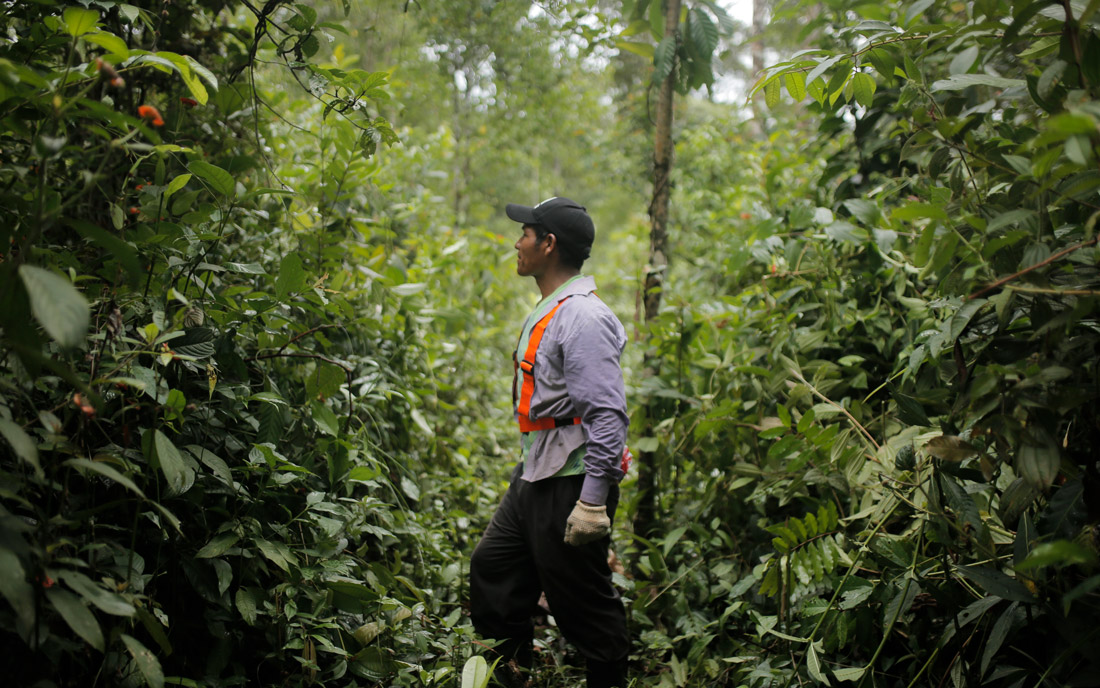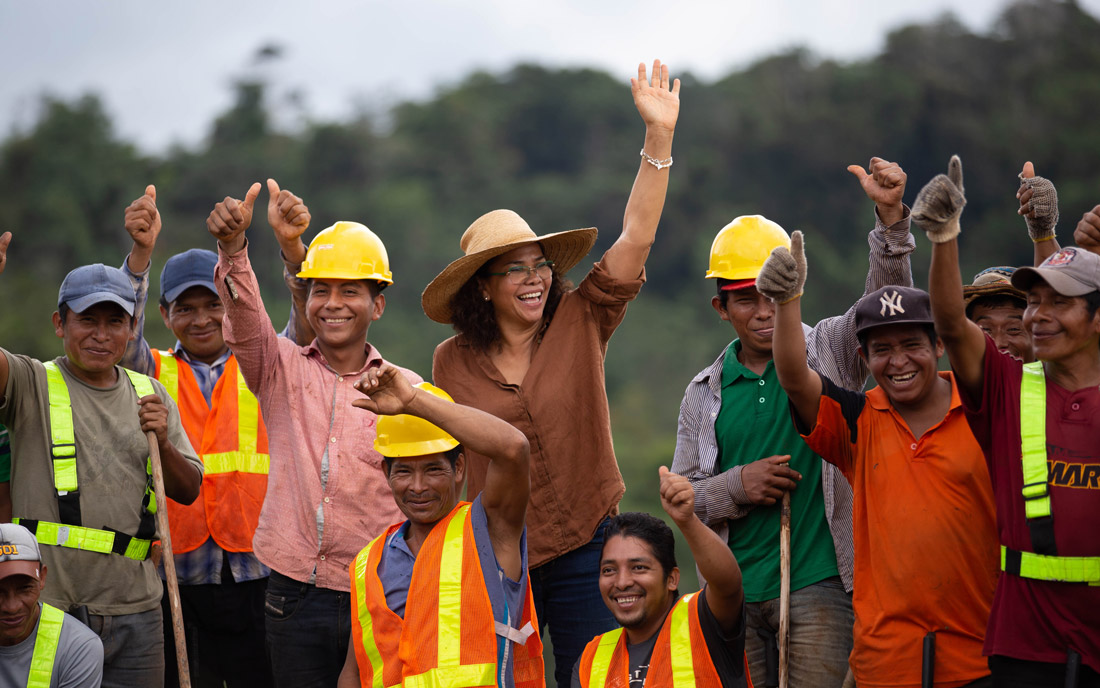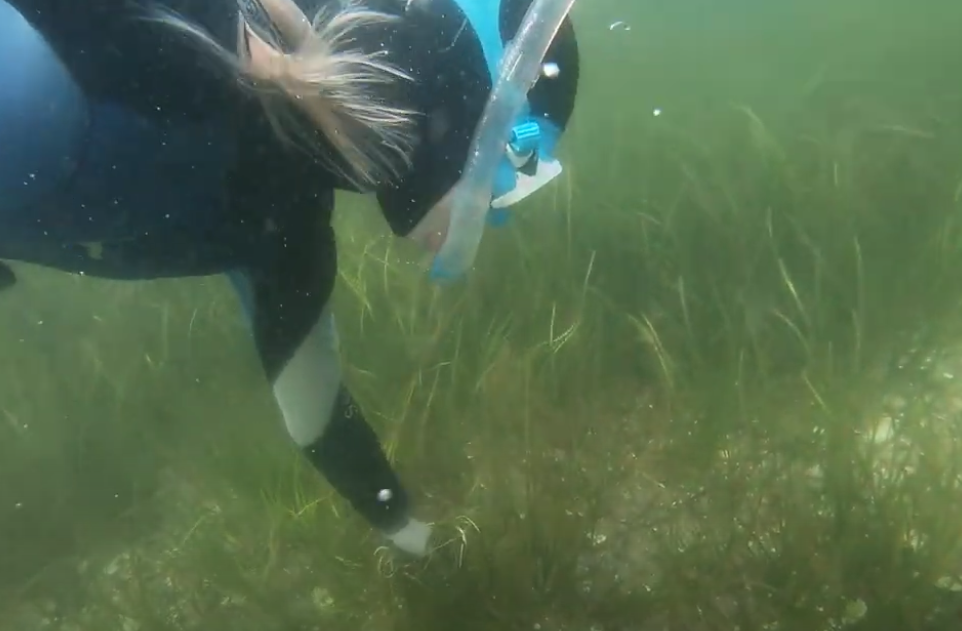Build your own climate protection forest!

The Hamburg-based cooperative The Generation Forest enables every one of us to create his or her own climate protection forest. Not as a donation, but as a co-owned community property. The ownership guarantees that the forests are managed – and hence protected – for generations.
Anyone searching the Internet will quickly find well over 20 different offers to donate money to plant a tree. Many companies start similar campaigns. For example, some Edeka food retail stores reward customers who buy plastic-free with bonus points, which the company converts into a tree donation. Our colleagues from Ecosia, the search engine that plants trees, likewise give away funds to local tree-planting initiatives.
We wondered why this is always done as a donation. Of course, with donations, trees can be planted where they would otherwise not be planted (with traditional investor money). However, they have the disadvantage that the donor – and possibly also some of the tree planting organizations – do not really know what will happen to the trees in 3, 5, or 20 years. We simply do not know.
Forests that last forever
The Generation Forest eG cooperative which was founded in Hamburg in 2016 deliberately takes a different approach. It plants forests, not just individual trees, and cares for them over generations. It does this in regions struck by heavy deforestation where other initiatives would carry out tree donation projects: in the heart of the tropics, specifically in Central American Panama, one of the core biodiversity hotspots worldwide. This enables you to join in and build your own climate protection forest.
In contrast to its neighbour Costa Rica, where politicians took countermeasures relatively early on and provided incentives for reforestation, Panama suffers from large areas that are gradually becoming devastated. The areas were once cleared for livestock farming, but the tropical soils are not made for this and are leaching out. The children or grandchildren of the cattle farmers are moving to Panama City. Since the areas lack the protective leaf canopy, the rainwater runs off immediately and is not available in the dry season to supply the Panama Canal with water. A clear loose-loose situation.
The Generation Forest-Cooperative buys up pieces of land that nobody else can use economically and reforests them with near-natural mixed forests which emcompass a wealth of precious native tree species. Through the plant growth, the forests absorb about 14 tons of CO2 per hectare every year.
What fascinates us is the co-ownership model: Each of us can participate in the cooperative and hence build up his or her our own climate protection forest together with the other members of the cooperative.

This is how it works: You buy one or more cooperative shares. The cooperative uses the money to plant and maintain the forests. After 15-20 years, selected trees are harvested, with the wood being sold to fund the operations. The value of the cooperative share is maintained or even increases a little every year.
Internally the cooperative expects an increase in value of 4.5% per year. As long as no wood is sold, the price will be increased by this amount every year. If, contrary to expectations, the value should decrease due to pest infestation or fire, the price premium would be reduced again; the annual general meeting decides on this.
«Our generation forests are natural rainforests that remain forever. Through sustainable forest management, at fair conditions on site, we generate a green dividend for our members and are actively engaged against climate change.» Iliana Armièn, Co-founder of The Generation Forest
The cooperative benefits from the fact that the growth of forests in the tropics is about four times faster than in temperate latitudes. This means that more CO2 is bound and more wood is produced – despite selective harvesting – the sale of which the cooperative finances in the long term. At the same time “more” wood is somewhat misleading. Many of the tree species planted score points not because of their rapid growth, but because of their very dense, noble wood. These include, for example, the native rosewood, which creates x times more value than teak or even cheap eucalyptus wood.
A share corresponding to an area of 500m2 costs 1,200 euros plus the price premium of currently 108 euros, which compensates for the increase in value in the first few years. Many use the subscription model, which allows you to buy a share in instalments starting at 25€ per month.
What would be a normal forest in Germany is a revolution in Panama
The special thing about the “generational forest” is that, according to our standards, it is a completely normal managed mixed forest, as we have known it in Europe for centuries.
But this is exactly what does not exist in the tropics (almost) at present. Two extreme forms of management dominate there:
- Natural forest management: Here, the forestry enterprise is granted a concession to manage an existing rainforest. This works in such a way that as a rule one or two valuable woods per hectare are removed; this is only every 30 years, as the precious woods are very rare due to the enormous diversity of species. The system is not efficient.
- Plantation: The plantation is the other extreme. It has nothing at all to do with natural forests. Useful woods – such as eucalyptus or teak – are planted in monoculture and harvested like a cornfield after 15 to 25 years. Apart from a small CO2 effect, the whole thing is ecologically a disaster.

The generation forest concept combines the best of both worlds. The cooperative creates mixed forests that are close to nature, but which – unlike in the tropical natural forests themselves – have a very high density of valuable woods.
In order to achieve such a near-natural forest, the cooperative plants 5-6 different tree species on each newly developed area from the outset. In addition, there is a second decisive step: with the first thinning after a few years, additional trees such as the rare rosewood are replanted in the gaps that have been created, which benefit from the protection of the forest around them. This creates the multi-story system that is characteristic of the tropics, in which different generations of trees stand side by side. When individual trees are removed later, the next generation of trees is already ready; the protective leaf canopy is preserved. Added to this is the natural rejuvenation. Many native tree species grow by themselves in the gaps that have been created, because the wind or animals carry the seeds in, and provide even more diversity.
«Achieving more together: Our goal is to have a positive impact on the world. As a large community, we are convinced that we can solve social challenges through collective action.» Iliana Armièn, Mitgründerin The Generation Forest
A hybrid of social business and cooperative
The governance structure of The Generation Forest is remarkable, if not unique. First, a cooperative per se always is a type of social enterprise, since it operates for its own members, not for outside investors. Besides, by law, the founders are on an equal financial footing with all other members. There exists no sweat equity.
Second, The Generation Forest Cooperative is deliberately breaking new ground. Traditional cooperatives make all decisions by head (each member has one vote), while in the traditional corporate world it typically is the allocation of capital which determines the voting rights. The Generation Forest Cooperative adopted a decision-making scheme that differs from other companies. It differentiates between investing and voting members. Currently there are 19 voting members. However, in many case the opinion of all members are taken in to ensure to act in the interest of all members.
The cooperative is led through an agile organizational structure by a young, highly committed team in Hamburg in cooperation with the board, represented by the two co-founders Iliana Armién and Andreas Eke as well as Dr. Mathias Hein.

This is how you can build your own climate protection forest!
Becoming a member of a cooperative is amazingly easy. All you have to do is fill out a short two-page form online. This will be sent to you by post for you to sign.
Unlike many financial investments, there is no flood of additional documents with small print, which nobody reads or understands. Rather, the comparatively strict Cooperatives Act and the Auditing Association Cooperative provide protection for members. As a new member, you only have to tick off that you have read the statutes of the cooperative. And these are easy to read.
You can also give a cooperative share as a gift, e.g. for children or godchildren, to friends or employees. A meaningful idea especially at Christmas time.
Note: The cooperative was initially spun off from the Hamburg Social Impact Lab under the name Waldmenschen eG. It has since been renamed The Generation Forest to make the forestry concept it represents more visible.
You have questions or suggestions? Write us!
Dr. Andreas Renner, Co-Founder GOOD: andreas@good-search.org

